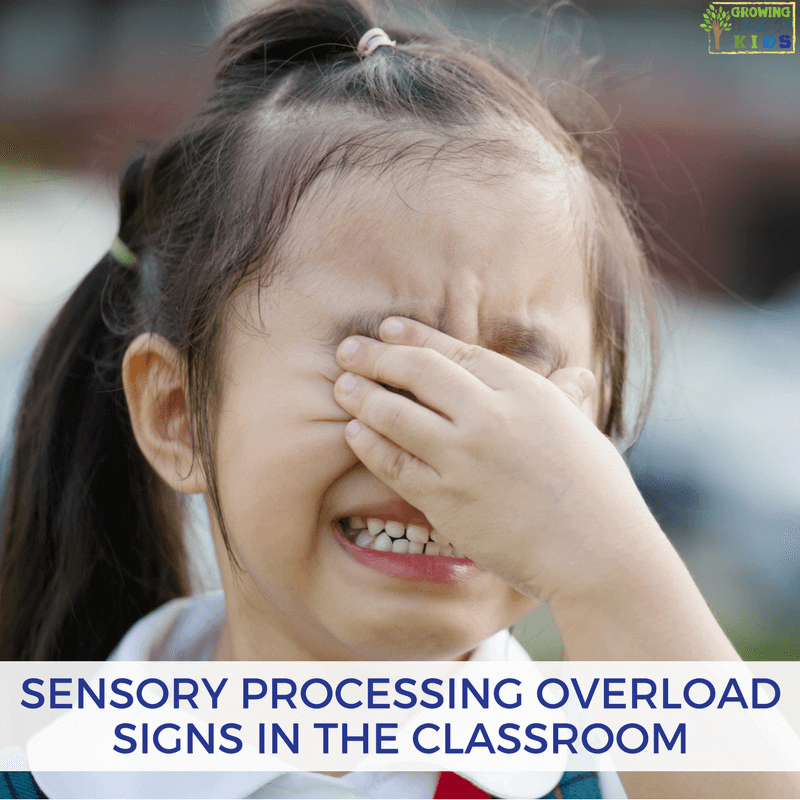Sensory Avoiding vs. Sensory Seeking Behaviors
Affiliate and Referral links are used below to promote products I love and recommend. I receive a commission on any purchases made through these links. Please see my disclosure policy for more details. As an Amazon Associate, I earn from qualifying purchases.
Children differ in their sensory processing preferences. Learn about the different types of responses to sensory input, including sensory seeking and avoiding.
I am surrounded by sensory processing resources and education all the time. I tend to forget that others may not understand many of the terms related to sensory processing behaviors or sensory processing disorders. I recently saw a conversation on Facebook between some acquaintances that prompted me to address some common misconceptions when it comes to sensory processing. So today we are going to look at sensory avoiding vs. sensory seeking behaviors.
Did you know there is a third category for under-responsiveness to sensory input? Let's dive right in!
Sensory Avoiding vs Sensory Seeking
There are a few terms we need to dissect before we can begin to understand what sensory-avoiding or sensory-seeking behaviors can look like. You will see these terms referred to in a few different ways depending on what book you read, so I am including all the common phrases to describe each.
SENSORY AVOIDING
You will see sensory avoiding referred to as a few different things: hyper-responsive, over-responsive, or hypersensitivity. Children with sensory-avoiding behaviors are excessively responsive to sensory input. The slightest movement, touch, or sound could send you or a child into a negative behavior response. They will often avoid certain sensations, sounds, or environments because of this heightened awareness and response.
SENSORY SEEKING
You might see sensory seeking referred to as hypo-responsive or hyposensitivity. This means a child does not receive enough sensory input and is constantly looking for or “seeking” it to get to that “just-right” level of arousal. You may see it referred to as a “sensory seeker” or a “sensory-seeking child”.
These behaviors can impact their day because they are not able to focus or attend to a task until they are at that just-right level.
UNDER-RESPONSIVE
There is a third category that can be overlooked and may seem similar to sensory avoiding, but it is very different. Children with an under-responsive sensory system exhibit a diminished response to sensory input. More sensory input is needed than average to get a response. They can look like they are “lazy” or “tired” and just don't pay attention to their surroundings.
Common Misconceptions with Sensory Avoidings vs. Sensory Seeking Behaviors
A common misconception is that if a child is a sensory avoider in a few areas of sensory processing they will avoid all types of sensory input. This is simply not true. A child could avoid auditory or tactile input (sounds and touch) but could crave vestibular input (the sense of balance). And they could even avoid or crave different activities within the same sensory system.
What could this look like? You may have a child who can't stand tags on their clothing or the seams in their socks or shirts (part of the tactile system). But they may crave a tight-fitting shirt or need to wear a weighted vest or a lycra body sock for different situations (this is tactile and proprioceptive input).
You may have a child who loves to spin or hang upside down but is afraid of heights (this is all part of the vestibular system).
A child may also have sensory-seeking behaviors with one sensory system avoiding behaviors or under-responsive behaviors with a different one.
It is important to address a child's sensory avoiding, sensory seeking, and under-responsive behaviors when we are looking at sensory processing. All three can play a part in helping them learn strategies and self-regulation tools to get through their day.
If you do feel like your child struggles with sensory processing input, ask for an Occupational Therapy referral and evaluation to assess your child's sensory system. Occupational therapists are specially trained to look at sensory integration and how your child is processing sensory stimuli. They can give you specific sensory-seeking activity ideas, or strategies to help with sensory avoiding or under-responsive behaviors.
Download the 8-Sensory Systems Free Printable
There is a 9-day sensory processing email series that will give you a quick overview of each of the 8 sensory systems, including avoiding, seeking, and under-responsive behaviors. You can sign up for it below.
You'll receive 9 emails with an introduction to each sensory system. The first email also has a link to download the free printable.
Download the Free Printable
Subscribe to GHOK and receive the free sensory system email series and 8 sensory systems printable packet as a free gift.
I also have a blog post addressing each of the eight sensory systems here.
You can learn all about sensory avoiding, sensory seeking, and under-responsive behaviors along with tips, tools, and strategies for parents and educators in the book Sensory Processing Explained: A Handbook for Parents and Educators. I co-authored this book with my good friend Sharla, and it is your one-stop read for anything and everything related to sensory processing.
We address sensory vs. behavior (and how to tell the difference), sensory meltdowns vs. tantrums, and give you tips, tools, and strategies for addressing sensory needs in the home or classroom.
You May Also Like:

Heather Greutman, COTA
Heather Greutman is a Certified Occupational Therapy Assistant with experience in school-based OT services for preschool through high school. She uses her background to share child development tips, tools, and strategies for parents, educators, and therapists. She is the author of many ebooks including The Basics of Fine Motor Skills, and Basics of Pre-Writing Skills, and co-author of Sensory Processing Explained: A Handbook for Parents and Educators.





My 5yo has SPD and I myself had it undiagnosed as a child (and still retain some symptoms). As such, it’s a subject I find touchy (erm…) and I want to thank you for some brilliant posts. I wish more OT’s were as informed as you around the world and though they try their best, I don’t think many are.
My 5 year old son can’t keep his hands to
Himself and is rough with the kids in his
Class. Is this sensory seeking or sensory
Avoiding or just a bad behavior?